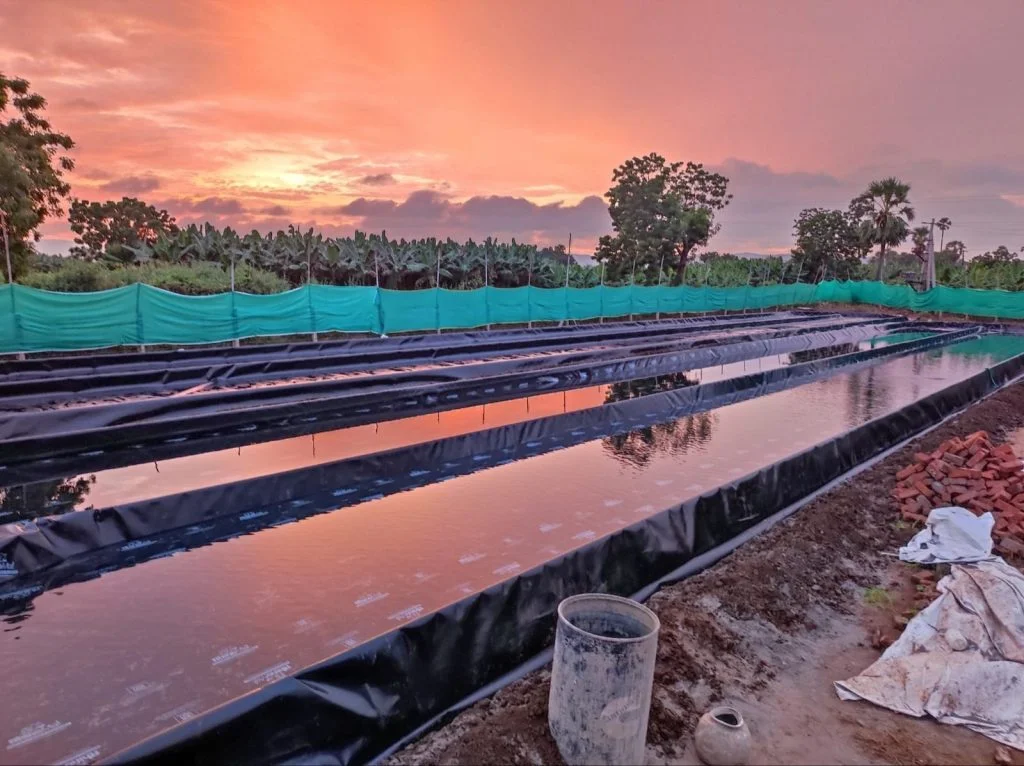As environmental concerns grow, and the demand for sustainable, nutrient-dense food sources rises, Spirulina has taken center stage in the agricultural world. Mass-producing Spirulina can, however, be energy-intensive, requiring thoughtful integration of green technologies and resource-efficient methods. Here, we explore sustainable mass production practices that are key to future-proofing your Spirulina farming operation.
Utilizing Solar and Wind Energy: Powering Your Farm Sustainably
One of the biggest challenges in large-scale Spirulina farming is energy consumption, especially in regions with warm climates where cooling systems and water pumps run continuously. Switching to renewable energy sources such as solar and wind power can significantly reduce your carbon footprint and operational costs. Solar panels can power your farms’ essential systems, while wind turbines provide additional energy, particularly in windy regions. These renewable energy sources not only reduce electricity costs but also appeal to consumers who value sustainable production practices.
Low-Energy Drying Systems: Refractive Window Drying for Efficiency
The drying process in Spirulina production is typically energy-intensive, but alternative, low-energy drying systems are now emerging as a sustainable solution. One such method is refractive window drying, where sunlight is harnessed and directed through specially designed reflective surfaces to dry the Spirulina naturally. This method reduces the need for electricity and shortens drying times, making it an efficient and environmentally friendly option. By adopting low-energy drying systems, you can maintain product quality while lowering your energy consumption.
Low-Energy Harvesting and Efficient Pumping Systems: Reducing Energy Use
Harvesting Spirulina and managing water circulation are both essential but energy-consuming tasks. However, low-energy harvesting systems and efficient pumping technologies are transforming the way Spirulina is produced. Modern, energy-saving harvesting systems reduce water usage and streamline the filtration process, making the operation more resource-efficient. Additionally, using high-efficiency pumps that consume less energy while maintaining high water flow helps reduce operational costs while keeping water movement optimal for Spirulina growth.
High-Efficiency Pumps: Optimizing Water Circulation
In a mass Spirulina farming setup, efficient water circulation is vital for maintaining a healthy culture. High-efficiency pumps are designed to move large volumes of water with minimal energy use, keeping your operation both sustainable and cost-effective. These pumps are engineered to require less maintenance and use energy-saving technologies that can lower electricity consumption by as much as 30%. Adopting such technologies will not only cut down operational expenses but also significantly reduce the carbon footprint of your farm.
Sustainable Feed Options: Turning Agricultural Byproducts into Spirulina Fuel
Sustainably feeding Spirulina is key to minimizing the environmental impact of mass production. One way to achieve this is by using non-petroleum-based feeds, such as agricultural byproducts. By tapping into waste streams from other agricultural processes like plant-based waste, vegetable peels, or even rice husks you can provide your Spirulina culture with the necessary nutrients in an eco-friendly way. These sustainable feed options reduce reliance on fossil fuels and minimize waste, offering a closed-loop system for future-proof farming.
Organic Practices: Growing Spirulina with Integrity
Incorporating organic farming practices into Spirulina production is not just a trend it’s a key driver for long-term sustainability and market appeal. By avoiding chemical fertilizers and pesticides, and instead focusing on organic inputs, you can produce a cleaner, more nutritious Spirulina product. Organic certification also opens doors to niche markets that command higher prices and cater to health-conscious consumers. The growing demand for organic products means that adopting these practices will benefit both your farm’s environmental impact and its profitability.
Why Hiring a Consultant is Crucial: Navigating the Complexities of Sustainable Farming
Implementing sustainable practices in Spirulina farming is not as simple as switching to renewable energy or adopting organic methods. It requires an understanding of local climates, access to the right technology, and the expertise to navigate regulatory frameworks. This is why hiring a knowledgeable consultant can be a game-changer. Experienced consultants can guide you through the process, from selecting the right renewable energy systems to optimizing your feed strategy. They can also provide valuable insights into emerging technologies and sustainable methods that can maximize your yields while reducing costs.
Final Thoughts: Spirulina Farming for a Greener Future
The future of Spirulina farming lies in the ability to produce it sustainably, on a mass scale, without compromising on environmental integrity. By embracing renewable energy, low-energy drying and harvesting systems, sustainable feed practices, and organic farming techniques, Spirulina farmers can lead the way in sustainable food production. However, the path to sustainability can be complex, and working with a consultant who understands the nuances of green technology and efficient production methods is essential.
This is where Greenbubble’s turnkey Spirulina Farming Solution offers a comprehensive advantage. Greenbubble specializes in helping farmers seamlessly integrate sustainable practices into their Spirulina production processes. Their consulting services cover every aspect of the farming cycle, from setting up renewable energy systems like solar and wind power to implementing low-energy harvesting and drying systems and optimizing sustainable, non-petroleum-based feed options. They also assist in adopting organic farming practices that ensure your Spirulina production aligns with growing market demands for eco-friendly and organic superfoods.
By working with Greenbubble’s turnkey solution, you gain access to tailored expertise and a full suite of services that make transitioning to sustainable mass production easier and more efficient. Greenbubble’s in-depth knowledge of green technologies and sustainable agriculture allows you to avoid the pitfalls of trial and error, ensuring that your farm operates with maximum profitability and minimal environmental impact.
By following these sustainable practices, with the support of Greenbubble, you can not only produce Spirulina more efficiently but also contribute to a healthier planet while meeting the growing demand for eco-friendly superfoods.


